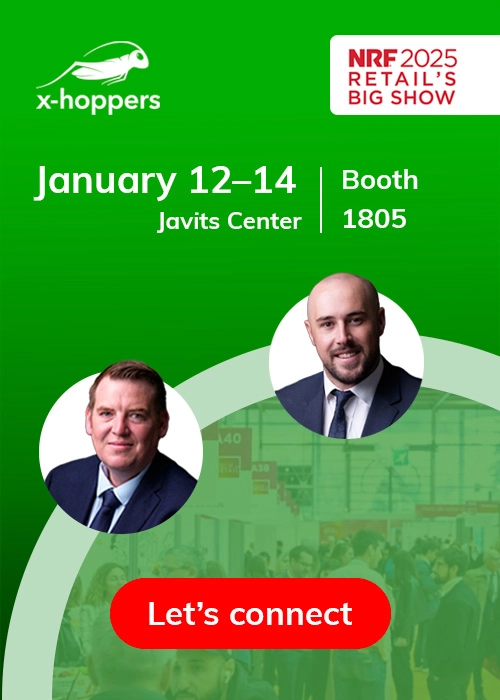
Your employees are not only the face but the heart of your business. When a customer thinks of your brand, your logo, colors and store layouts typically come to mind, but what keeps them coming back, or potentially boycotting your stores, is their interactions with store associates. The friendliness, helpfulness and knowledge of your employees are vital not only to securing sales but also to turning occasional shoppers into loyal fans.
On top of that, the success of every process you implement and every experience you cultivate within your store is dependent upon the buy-in and support of your employees. If they’re apathetic, they’ll follow through half-heartedly or not at all, leaving you with failed projects and disappointed customers. As a result, the best way to implement change, increase brand loyalty and drive sales is to prioritize improving your employee experience.
But to be successful, you need to start with what your employees need to feel valued and appreciated, not with what you need them to know or do.
Ask the Experts
Your business is unique, and so are your people. That means the experts on how to improve the employee experience in your business are the members of your team. Ask them. You could do this through regular anonymous satisfaction surveys or by conducting interviews. You just have to ensure that staff members feel safe enough to give you accurate feedback. If they are concerned that they could face repercussions for saying anything negative, they’re likely to gloss over major issues or refuse to respond at all. And the last thing you want is to launch a fact-finding campaign only to get back platitudes and half-truths. Once you have enough feedback, you can start to identify which issues are holding your team back and develop an action plan.
Common Issues
While everyone’s results will differ, the nature of brick-and-mortar shops means that there are some common issues that most frontline retail workers will face at one time or another. To give you a headstart, here are a few items we’ve seen pop up on employee surveys along with actions you can take to address them.
Communication
Perhaps the most common problem holding stores back, lack of communication can cover a range of things from inadequate handovers to a failure to update key players about important store changes and events. If your staff members don’t have the right information at the right time, they risk focusing on the wrong task — or worse — giving customers the wrong information. This in turn can lead to more returns and lost customer loyalty.
But more importantly, if you don’t ensure that team members are connected and actively collaborating, you’re setting the scene for high staff turnover and dissatisfied workers. Being in the loop is one way that people know that they are valued and appreciated. So as important as it is to make sure store associates know all about the new promo, it’s equally important that they can discuss everyday issues and ask questions from management and other stores when necessary.
While there are a few ways you can tackle this issue, one of the most effective is to equip them with a communication system that allows them to talk to anyone in the store from anywhere in the store. Traditional solutions such as walkie-talkies, PA systems and bells can help bring the store together, but they are bulky, are loud and can be easily missed by the person you’re trying to reach. Retail headsets, on the other hand, are discreet, hands-free and secure and, depending on where you source them from, offer multiple integrations making it possible to receive and make external calls and systems notifications from the same device. With tools like these in place, it makes it much easier to share information and bond across departments, improving morale and efficiency at the same time.
Access to Managers
However, it’s important not only to facilitate communication between colleagues but with managers as well. Staff members who work opposite shifts to their direct manager or only rarely see them because they divide their time between the shop floor and the office, miss out compared to workers who have a more open line of communication. Since they see their manager less, workers with reduced hours or odd shift patterns are less likely to receive important feedback on their performance or be put forward for opportunities. This makes it harder for them to be promoted and can also cause them to feel like their hard work goes unnoticed, causing them to disengage.
The first step to tackle this is to encourage and train managers on the importance of mentoring and connecting with their team. But even with training, you need to have a way for employees to quickly and easily ask their manager questions. Connecting everyone to an in-store headset is one way to do this, and works when the manager is on the shop floor and on the same shift as the employee. An even better way is to connect the headsets to a unified communication system that lets store associates call their manager from the headset and have the manager answer from an office phone, web browser or mobile app, whichever is more convenient for them. Chat could also be an added feature, making it a more convenient way to ask questions when the employee and manager are on different shifts. That way the question can be answered at any time and would be more visible than an email. And to ensure that managers and staff alike could respect each other’s work/life balance, profiles could be set to do not disturb (DND) so they wouldn’t receive messages outside acceptable hours.
But beyond establishing communication, a complete system could also provide automatic transcriptions and analytics of each user, allowing managers to get a data-fueled picture of an employee’s actual performance, leading to more productive performance reviews and ensuring that even staff members who work opposite their managers get an equal opportunity for pay raises and advancement opportunities.
Training opportunities
In addition to hearing about training opportunities or being put forward by managers, there are staff members who don’t have the flexibility due to outside commitments to make rigid training sessions. If a training session is only offered between 9 and 5, students, for example, won’t be able to take part. So, the options are either to have multiple sessions that accommodate as many workers as possible or to find a way to make the material available.
Virtual sessions are a good solution, allowing you to pool together enough participants from multiple sites for a specific time. It can also save you on travel costs and room hire. Online training models are another great option. Both have one major downside though: They also require time off the floor. And if someone is consistently scheduled for weekends or shifts where there is little cover, it can be hard to find the time to dedicate to learning.
While not suitable for all training topics, giving store associates access to an AI assistant that can pull up detailed information on products or procedures is hugely beneficial for employees as they can access the information at any time without having to search for the information they need. And since they’re getting the right information at the right time in small snippets, they’re more likely to retain it for the future. The AI assistant could appear as a chatbot, or for seamless customer service and employee convenience, it could be voice-activated and accessible from a headset. This setup has the added benefit of letting employees know they can answer any customer question, giving them the confidence they need to approach and actively sell to customers.
The Right Tools for the Job
One of the most frustrating things is knowing how to solve a problem, but not having the proper access to the tools you need to actually solve it. The other is wasting time on tasks that could be automated or made easier. As a result, investing in the right technology is not just something that can impact employee productivity, but also their level of enjoyment and satisfaction in their job.
This could be as simple as giving them the ability to make internal and external calls to help customers track down problems with an order to sending them notifications when there’s an issue with a smart fridge or a customer needs help at a self-checkout machine. Anything that reduces the time it takes to solve a very easy-to-solve problem, is a benefit to the employee, the customer and, at the end of the day, the business.
Safety
Stores are places where the doors are open to the public. If they weren’t, how would you ever make a sale? But at the same time, that means that the unexpected can walk through the door at any time. In both the UK and the United States, there has been a notable increase in organized retail crime and other violent incidents against staff, with the British Retail Consortium reporting a 50% increase in retail violence last year and the National Retail Association sharing that 81% of American retailers report that organized retail crime offenders have grown more violent.
Nobody wants to face abuse at work, and no one should. When it comes to theft, having deterrents in place can go a long way to reducing blatant crime. Now, AI theft detection is available that can detect suspicious behaviors and send alerts either over store headsets or the PA system, alerting would-be thieves that they are being recorded. Having the alerts sent over headsets is certainly more discreet, and perfect for stores with a security team, but even just having headsets ensures that employees can always call for help without needing to pick up a phone or reach for a bell. With the headset on, they can even make external calls, so in the unlikely event they need to speak to someone off-site or emergency services, they can do so quickly without drawing attention.
Belonging
But more than just feeling safe and supported in their job, retail workers want to feel like they belong. Part of that means choosing an employer that aligns with their personal values, but on an even more personal level, it means connecting with their colleagues, managers and the wider company.
Open communication is key to building this, especially for lone workers. Being able to ask questions, learn from each other and even being trusted to make their own decisions is key to feeling like more than a cog in the machine, but a vital part of the business.
x‑hoppers: The Communication Tool Built for Frontline Retail Workers
As you can see, better-connected employees lead to happier staff. As a complete retail headset solution, x‑hoppers has everything you need to connect your store associates to colleagues, systems and customers, improving the employee experience. With headsets that not only connect to a broadcast channel but also allow staff to receive system notifications and AI theft detection alerts, manage internal and external calls and consult with an AI Assistant, it’s one small change you can make that impacts nearly every aspect of the employee experience.
But whatever you choose to improve your store’s communication make sure you choose one that is flexible enough to integrate with your systems and isn’t all about automation and one-side conversations. You need to leave room for the human touch.
Because at the end of the day, employees, like the rest of us, crave connection. And once you’ve built those strong relationships and backed them up with flexible and intuitive tech, you have everything you need to face the future of retail together.


